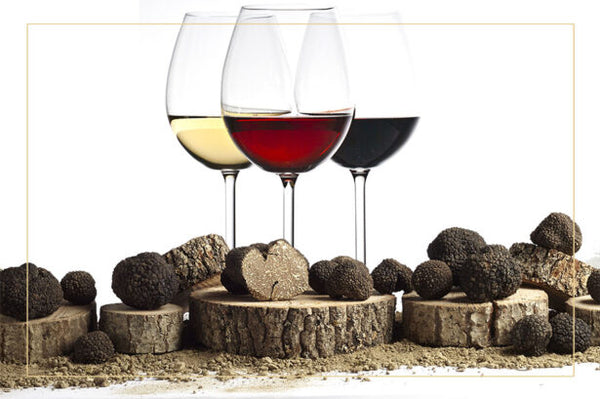Oct 19, 2022
Ilaria Rosa | Bottle of Italy
The truffle has very ancient origins, it seems that it was already known 4000 years ago; some scholars believe that this precious product of the earth was consumed at the time of the Sumerians and the Babylonians (IV-II millennium BC). It is said that the ancient Sumerians used it mixed with other vegetables such as barley, chickpeas, lentils and mustard, while the ancient Athenians appreciated it so much that they gave citizenship to the children of Cherippo for having created a new recipe with the fragrant tuber. Even for the ancient Romans it was a much loved ingredient, they copied its use in the kitchen by the Etruscans. Countless stories and legends chased each other to establish the origins of the truffle, the first testimony in Europe was spread by Pliny the Elder (23-79 AD) in the "Naturalis Historia". While according to the poet Juvenal it was Jupiter who threw lightning against the base of the trunk of an oak thus creating the rare "hypogeal mushroom", and given the famous sexual activity of the God, the truffle was defined "food of the gods" and considered extremely aphrodisiac.

However, it seems that the truffle of that time was not the same product we know today but the "Terfezia Leanis" (Terfezia Arenaria) or similar species, which abounded especially in Northern Africa and Western Asia. This type was poorer, it could reach a weight of 3-4 kg, but it was equally appreciated also because at that time the tubers of American origin (potato and tapinambur) were still unknown. Even those that arrived on the tables of the Roman patricians were of poor quality, but the price was very high. The truffle disappeared from frugal tables throughout the Middle Ages and for a long time remained the food only for badgers, pigs, wild boars and mice. During the Renaissance the taste of black truffles soon conquered a place among the most refined dishes of good food, depopulating in the canteens of French lords between the fourteenth and fifteenth centuries.

In the same period in Italy the fantastic white truffle was being discovered and affirmed. The first writings concerning the rare tuber were by the doctor Alfonso Ceccarelli, in Umbria in 1564 (Opusculus de tuberi), and Andrea Casalpino who named the truffle among the mushrooms. In 1600 in Piedmont to feel more "important" by imitating the French nobles, they began to make an exaggerated use of it; in the eighteenth century the delicious Piedmontese truffle was highly appreciated in all European Courts, collective collections were organized in the large palaces to cheer guests and foreign ambassadors visiting Turin. Even the Italian sovereigns Vittorio Amedeo II and Carlo Emanuele III delighted in setting up gatherings in grand style. Today the truffle is synonymous with great excellence and is appreciated worldwide, every year thousands of tourists and enthusiasts take part in events such as the Alba truffle fair.

The truffle is a precious and much appreciated ingredient, for this reason it is necessary to enhance it to the best by combining it with the type of wine that suits it best. It is important to keep in mind that the choice also depends on the type of ingredient combined with the truffle and the type of tuber chosen since each one has a different intensity of aromas and fragrances. Undoubtedly the white truffle is the most valuable type, it is mainly used fresh, cut with the special mandolin into thin slices. One of the dishes that best enhance its flavor are eggs, with this combination the recommended combination will be a white wine as rich and soft as
Les Cretes Chardonnay.
With rice first courses or noodles seasoned with butter, a good glass of red wine is perfect, complex, structured, with particular aromas reminiscent of truffles as the excellent
Nebbiolo Cascina Corte.












